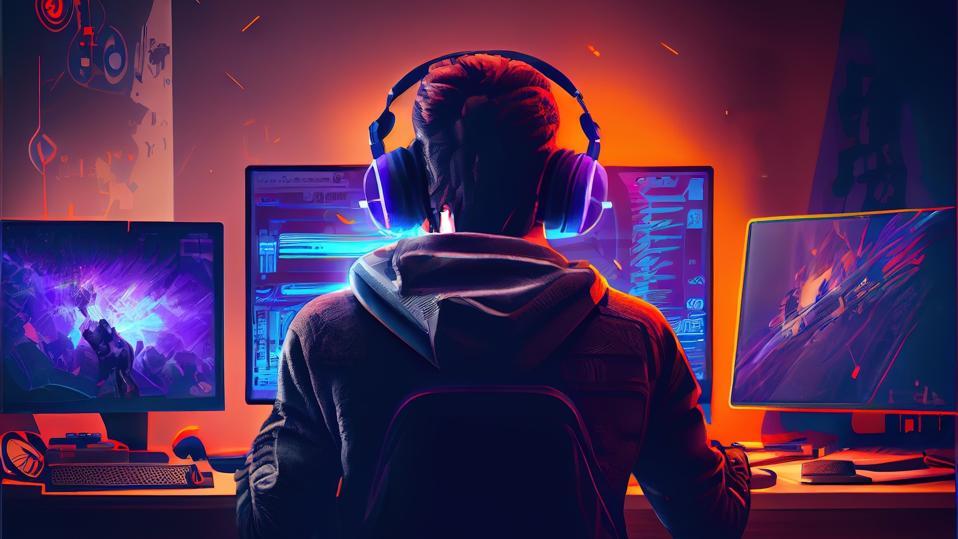Pixel Perfect: Trends Shaping the Future of PC Game Development
- Home
- Pixel Perfect: Trends Shaping the Future of PC Game Development

Pixel Perfect: Trends Shaping the Future of PC Game Development
- Juliet Desmarais
In the dynamic realm of PC gaming, visual fidelity serves as the bedrock upon which immersive experiences are built. From the earliest blocky sprites to today's hyper-realistic landscapes, graphics have consistently captivated players, drawing them deeper into digital universes. The relentless pursuit of visual excellence is not merely about aesthetic appeal; it is about crafting believable worlds and conveying intricate narratives that resonate on a profound level.
The term "pixel perfect" transcends a simple resolution count; it embodies a meticulous dedication to precision, artistic intent, and flawless technical execution. It refers to the subtle details – the crispness of a texture, the clarity of an interface element, or the seamless blend of lighting and shadow – that collectively elevate a game from good to truly exceptional. This level of detail is what distinguishes truly polished titles.
Player expectations have never been higher. Modern gamers demand visually stunning experiences, from exquisitely rendered character models and intricate environmental textures to fluid animations and dynamic particle effects. This escalating demand continuously pushes developers to innovate, explore new rendering techniques, and optimize every facet of their visual pipelines to meet and exceed these lofty standards.
Achieving this pinnacle of visual quality represents a delicate intersection of artistic vision and technological prowess. Advances in rendering engines, sophisticated shading algorithms, advanced animation systems, and real-time lighting solutions all contribute to the realization of pixel-perfect fidelity. Developers now wield an unprecedented array of tools to bring their most ambitious visual concepts to life.
For game development studios, achieving pixel-perfect visuals is not just a technical goal but a strategic imperative. In an increasingly crowded market, superior visual presentation can be a key differentiator, enhancing brand reputation, fostering player loyalty, and ultimately driving commercial success. This commitment to visual excellence is a core tenet at Entroplayistr, guiding our development philosophy.
The challenge, therefore, extends beyond merely pushing polygon counts or increasing texture resolutions. It involves a holistic approach to visual design, where every single pixel is optimized and carefully considered to convey the intended aesthetic and gameplay experience seamlessly. It's about ensuring that the artistic vision is perfectly translated onto the player's screen.
Applications of Pixel-Perfect Design
- User Interface and Experience (UI/UX): Ensuring pixel-perfect UI guarantees readability, clarity, and a highly polished feel, directly enhancing player interaction and immersion. Pros: superior usability, professional presentation. Limitations: can be rigid for dynamic scaling across various screen sizes.
- Retro-Inspired and Stylized Games: Crucial for maintaining authentic pixel art aesthetics, where every individual pixel carries significant artistic weight and contributes to the overall visual language. Pros: strong artistic identity, often less resource-intensive. Limitations: requires meticulous hand-crafting, can limit visual complexity.
- High-Fidelity Modern Titles: Essential for hyper-realistic textures, detailed environments, and seamless visual effects, contributing to profound player immersion and visual storytelling. Pros: breathtaking visuals, ultimate immersion. Limitations: extremely demanding on hardware, high development costs and optimization efforts.
The Evolving Landscape of Visual Fidelity
Expert opinions diverge significantly on what "pixel perfect" truly entails in the modern gaming era. Is it strictly about rendering at native resolution without any scaling artifacts, or has the definition broadened to encompass the *perceived* quality and artistic intent, even when utilizing advanced upscaling technologies? This fundamental question continues to shape development priorities and methodologies across the industry. 
The rapid rise of groundbreaking technologies, such as real-time ray tracing and AI-powered upscaling solutions like NVIDIA DLSS and AMD FSR, offers unprecedented levels of visual fidelity. However, these innovations also introduce complex questions regarding the "authenticity" of a rendered pixel. Some experts argue these tools undeniably enhance the visual experience, while others contend they abstract the raw pixel data, potentially impacting artistic control and fidelity.
A perennial point of contention among developers is the delicate trade-off between pushing visual boundaries and maintaining optimal performance across a wide range of hardware. Achieving truly pixel-perfect visuals often comes at a significant computational cost, demanding meticulous optimization, intelligent asset management, and sophisticated engine architecture. At Entroplayistr, we consistently prioritize striking this crucial balance to deliver both beauty and smooth gameplay.
The approach to pixel perfection also varies dramatically between different segments of the industry. Indie developers frequently embrace pixel art as a deliberate stylistic choice, where pixel perfection is about consistency and clarity within their chosen low-resolution aesthetic. Conversely, AAA studios pursue photorealism, where pixel perfection means eliminating any visible imperfections, aliasing, or rendering artifacts at the highest possible resolutions, presenting distinct sets of technical and artistic challenges.
Looking Ahead: The Future of PC Gaming Visuals
The pursuit of pixel-perfect visuals remains a cornerstone of PC game development, continually evolving in lockstep with technological advancements and boundless artistic ambition. It represents an unwavering commitment to quality and detail that profoundly resonates with players, enriching their experiences in countless ways.
Developers must skillfully navigate the increasing complexities introduced by new tools, ever-escalating player expectations, and stringent performance demands. The key to success lies in adopting a balanced and holistic approach, one that intelligently leverages cutting-edge innovation while steadfastly respecting the core artistic integrity of the game's vision.
Ultimately, the future of PC gaming visuals is exceptionally bright, promising even more stunning, immersive, and emotionally resonant experiences. This future will be driven by the unwavering dedication of developers to visual excellence and their continuous quest to redefine what's possible on screen.
 Entroplayistr
Entroplayistr
Comments 0